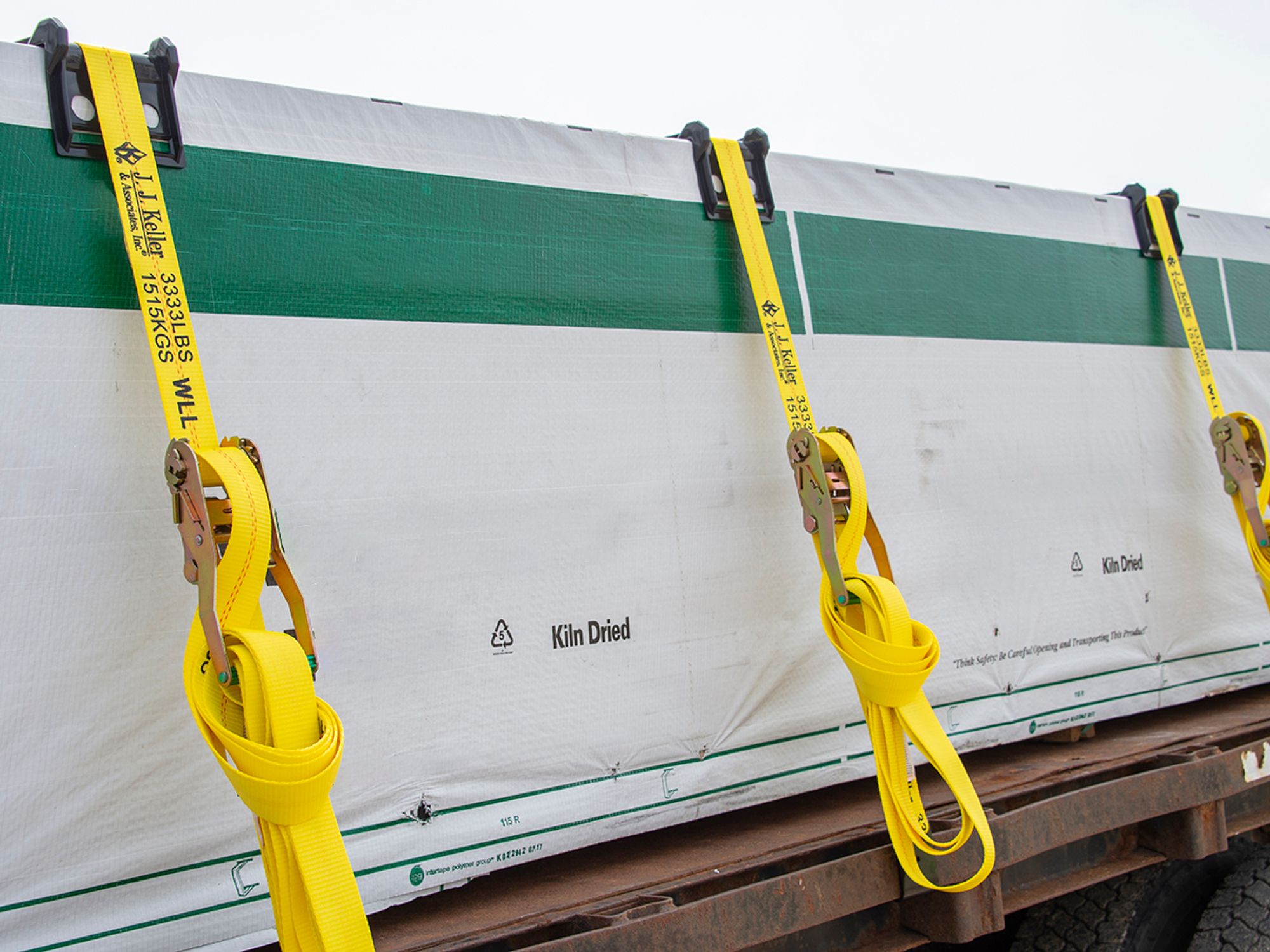Key definitions for cargo securement

- Various definitions are crucial to the understanding of cargo securement.
Aggregate working load limit: The summation of the working load limits or restraining capacity of all devices used to secure an article of cargo on a vehicle.
Agricultural commodity trailer: A trailer designed to transport bulk agricultural commodities in off-road harvesting sites and to a processing plant or storage location, as evidenced by skeletal construction that accommodates harvest containers, a maximum length of 28 feet, and an arrangement of air control lines and reservoirs that minimizes damage in field operations.
Anchor point: Part of the structure, fitting, or attachment on a vehicle or article of cargo to which a tiedown is attached.
Article of cargo: A unit of cargo, other than a liquid, gas, or aggregate that lacks physical structure (e.g., grain, gravel, etc.) including articles grouped together so that they can be handled as a single unit or unitized by wrapping, strapping, banding, or edge protection device(s).
Bill of Lading: An agreement between a shipper and a carrier governing their relationship with respect to the transportation of goods. It is the contract of carriage. As a contract, it names the parties involved and locations, defines the specific rate or charge for the transportation, and provides information regarding the limits of the carrier’s liability for damaged or lost goods. A contract carrier that has a specific agreement with a shipper is not required to use a bill of lading under 373.101.
Commercial motor vehicle: A self-propelled or towed vehicle used on a highway to transport property when the vehicle:
- Has a gross vehicle weight rating (GVWR) or gross combination weight rating (GCWR), or gross vehicle weight (GVW) or gross combination weight (GCW) of 10,001 pounds or more, whichever is greater; or
- Is transporting hazardous materials of a type or quantity that requires placarding.
Common carrier: A carrier that hauls cargo or passengers for any customer without a contract or master agreement. When acting as a common carrier, the goal is to obtain higher-paying loads from load boards on a load-by-load basis. All charges and conditions are subject to a bill of lading and rate sheet as agreed upon for specific loads.
Contract carrier: A carrier that has a contractual relationship with shippers, brokers, or freight forwarders to haul freight with the intent of creating more predictable load volumes on targeted freight lanes. The contract operates as a master agreement and covers rates, claims handling, accessorials, including loading or unloading charges, fuel surcharges, redelivery fees, and any other charge that is in addition to the linehaul mileage rate. Individual rate sheets may also be issued for each load subject to the master agreement on legal requirements.
Dockboard: A portable or fixed device that spans a gap or compensates for a difference in elevation between a loading platform and a transport vehicle. Dockboards include, but are not limited to, bridge plates, dock plates, and dock levelers.
Dunnage: All loose materials used to support and protect cargo.
Dunnage bag: An inflatable bag intended to fill empty spaces between articles of cargo or articles of cargo and the wall of the vehicle.
Edge protector: A device placed on the exposed edge of an article to distribute tiedown forces over a larger area of cargo than the tiedown itself, to protect the tiedown and/or cargo from damage, and to allow the tiedown to slide freely when being tensioned.
Heavy hauler trailer: A trailer which has one or more of the following characteristics, but which is not a container chassis trailer:
- Its brake lines are designed to adapt to separation or extension of the vehicle frame; or
- Its body consists only of a platform whose primary cargo-carrying surface is not more than 1,016 mm (40 inches) above the ground in an unloaded condition, except that it may include sides that are designed to be easily removable and a permanent front-end structure as described in 393.114.
Loading platforms: Loading docks, interior floors, driveways, or other walking or working surfaces.
Lumper: A day laborer employed to handle cargo.
Pulpwood trailer: A trailer or semitrailer that is designed exclusively for harvesting logs or pulpwood and constructed with a skeletal frame with no means for attachment of a solid bed, body, or container.
Tiedown: A combination of securing devices which form an assembly that attaches articles of cargo to, or restrains articles of cargo on, a vehicle or trailer, and is attached to anchor point(s).
Transport vehicles: A cargo-carrying vehicle that workers may enter or walk onto to load or unload cargo and materials. Transport vehicles include, but are not limited to, trucks, trailers, semitrailers and rail cars.
Wheel chocks/sand shoes: Wedges of sturdy material placed against a transport vehicle’s wheels to prevent movement, especially while people are working around or in the vehicle.
Working load limit (WLL): The maximum load that may be applied to a component of a cargo securement system during normal service, usually assigned by the manufacturer of the component.
